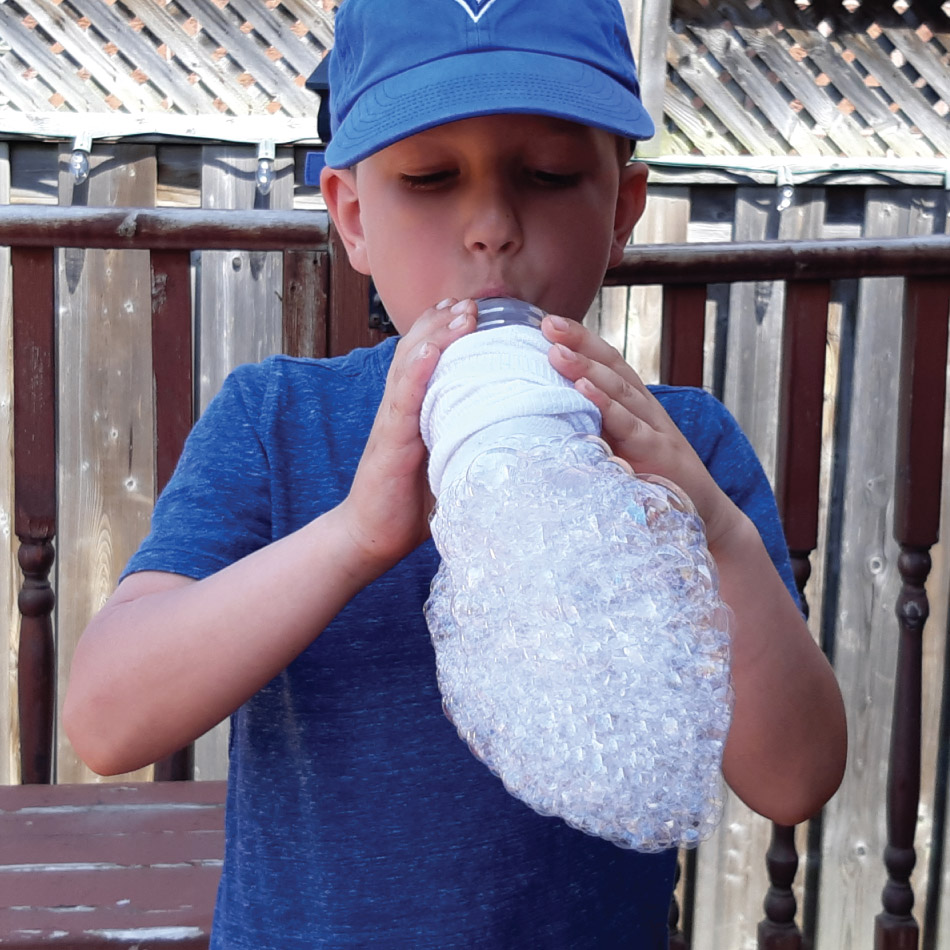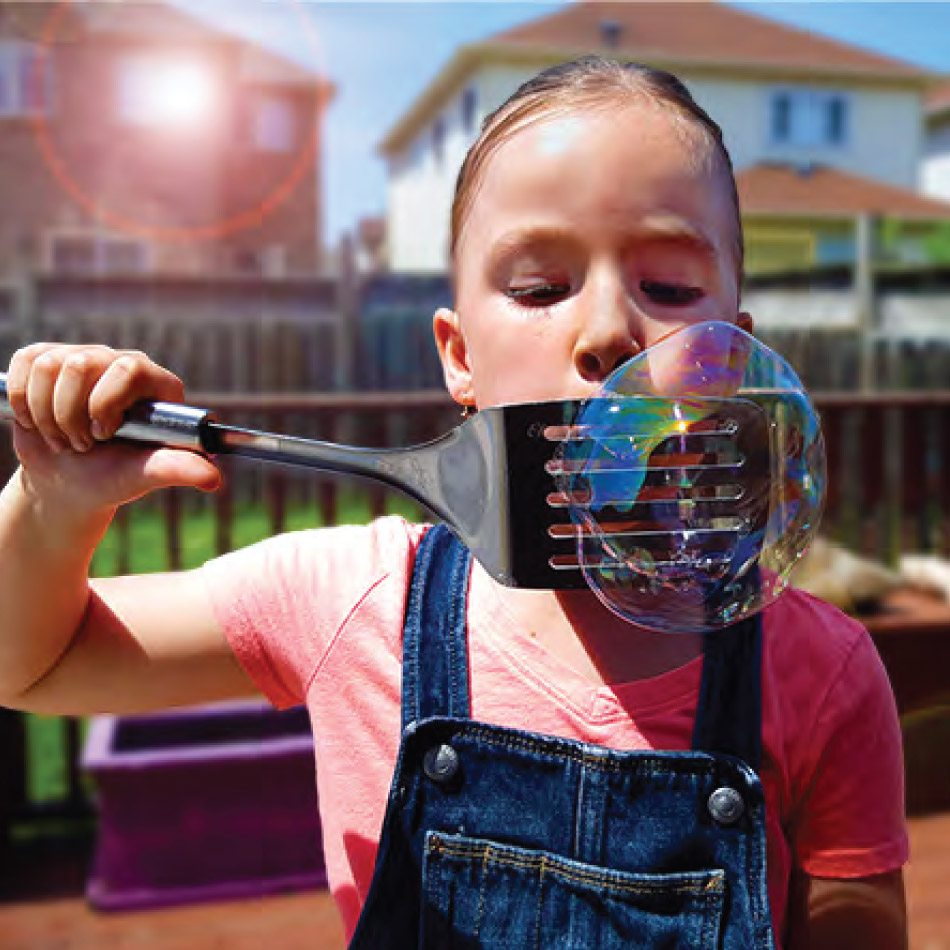Make Bubbles at Home
Learn about bubble properties and what ingredients will make your bubbles last.
- All
- Things to Make
- Experiments
- Get Outside
What you’ll need:
- 3-4 cups of water
- 1 bowl for mixing ingredients
- 1 tray for dipping your bubble wand
- 1 cup of dish soap (the brands Joy or Dawn work best)
- 1/3 cup of glycerin (substitutions: 1/3 cup of honey or 1/2 cup of corn syrup)
- 1 empty water bottle or pop bottle and a sock for bubble caterpillars
- Bubble wands—anything that can hold soap film, like a slotted spatula

Activity setup:
1. Make your bubble mixture
Glycerin option: In a bowl, mix 4 cups of water, 1 cup of dish soap and 1/3 cup of glycerin. Pour your mixture into the tray.
No glycerin? No problem! Try these substitutions:
With honey: Mix 4 cups of water with 1 cup dish soap first, then add 1/3 cup of honey.
With corn syrup: Mix 3 cups water, 1 cup soap and 1/2 cup corn syrup.
2. Make a bubble blower:
Take a recycled bottle and cut about 2-3 centimetres off the bottom. Pull the sock over the cut open side of the bottle.
3. Blow bubbles:
Dip the sock side of the bottle in the tray with the bubble mixture. Blow through the mouth of the bottle. Enjoy your bubble foam! If you keep blowing, you can make a bubble caterpillar.
To create larger bubbles, use the bubble wands. Compare the different types of bubbles between the bubble wand and the bubble caterpillar.

What's Happening?
A bubble is made of air trapped in a soapy film. The soap mixture that holds the air has three very thin layers—soap, water and another layer of soap. This “bubble sandwich” is called a soap film. All these layers work together to hold the air inside. A bubble pops when the water between the layers evaporates.
Why do we need glycerin, corn syrup or honey in making bubbles? These viscous liquids reduce the surface tension of the water, which tries to pull the sides of the bubbles together and make them pop. It also makes the bubble solution thicker. This thicker skin of the bubble keeps the water from evaporating quickly, making bubbles last longer. It also makes bubbles stronger so you can blow bigger bubbles.

Did you know?
- The colours on the bubbles happen when light bends as it passes through the sphere and reflects off the layers in the “bubble sandwich.”
- Bubbles last longer on cool, humid days than on hot, sunny days because the water evaporates at a slower rate.